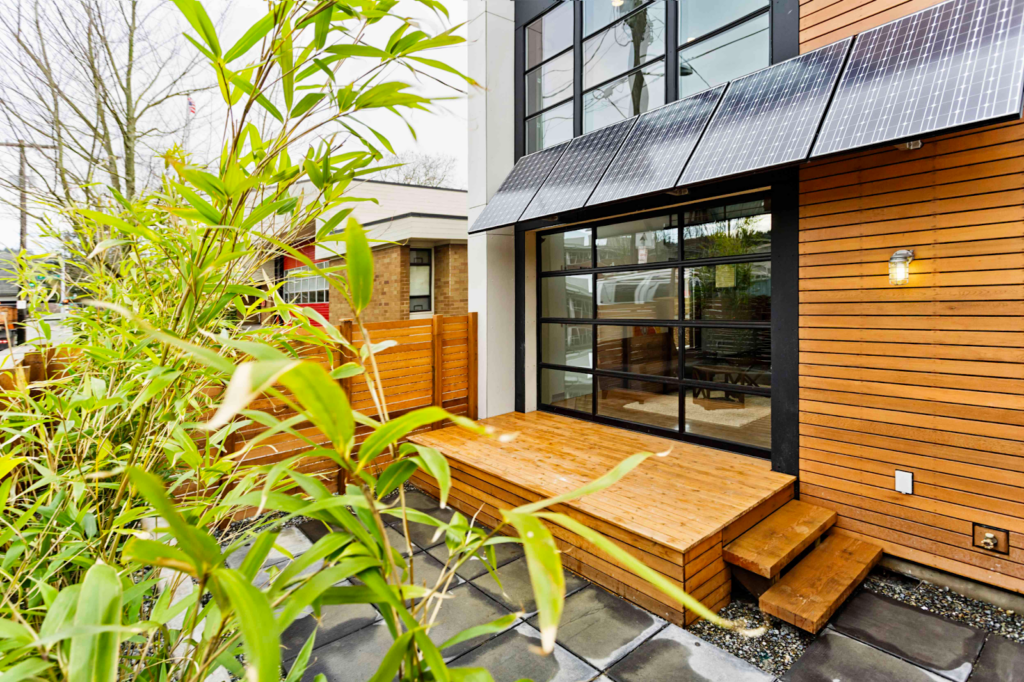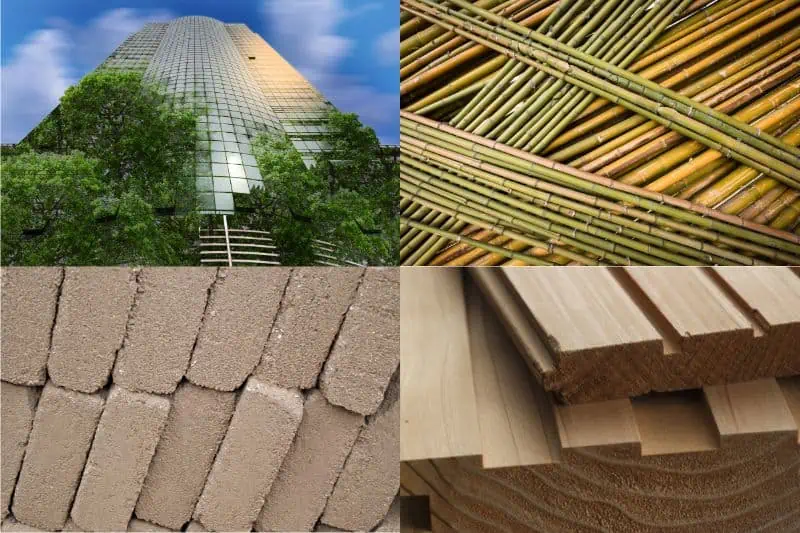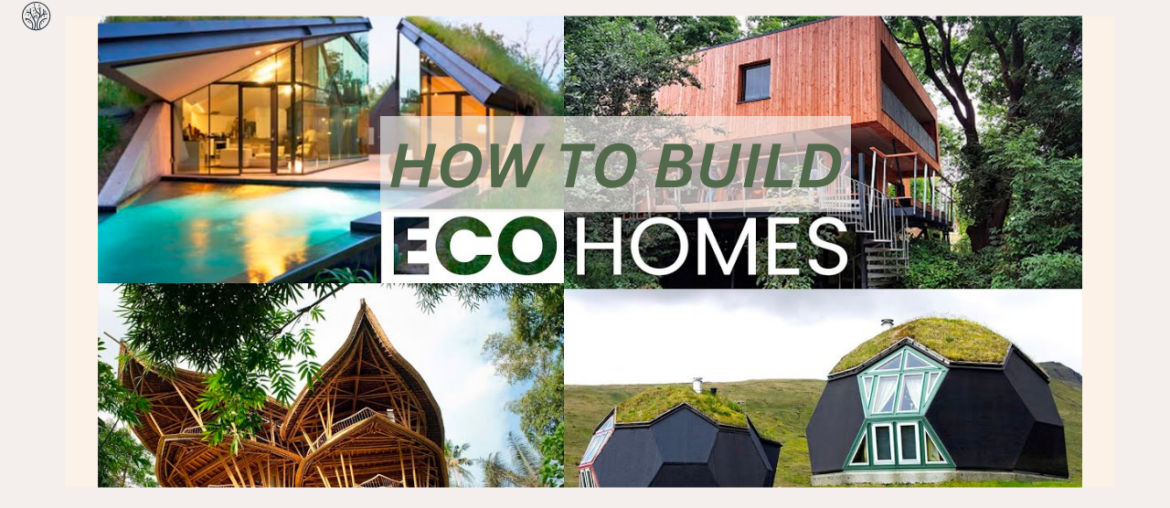Building an eco friendly house not only benefits the planet but also offers homeowners a chance to create a dwelling that harmonizes with nature while providing comfort and functionality. In this article, we delve into the essential principles of how to build an eco friendly house that respects the environment and stands as a beacon of sustainable living.
Understand Eco Friendly Architecture
In 2022, it’s estimated that buildings and construction account for over 30% of global final energy use and nearly 26% of energy-related CO2 emissions (according to the International Energy Agency). This unsustainable trend has led to ecological degradation and resource depletion, highlighting the need to transition to more eco friendly practices.

In the pursuit of a sustainable future, the concept of sustainability extends beyond the realms of economics and policy. The World Commission on Environment and Development defines sustainability as development that meets the needs of the present without compromising the ability of future generations to meet their own needs. When applied to architecture, this translates to designs that not only create healthy living environments but also minimize negative environmental impacts, energy consumption, and the utilization of human resources.
At its core, sustainable architectural design is a commitment to constructing green buildings that leave the lightest possible footprint on the natural world. This holistic approach considers not only the finished structure but also the entire lifecycle of the building – from conception to eventual disposal. While functionality and aesthetics remain paramount, the focus of sustainable architecture expands to encompass long-term energy efficiency and resource optimization. To achieve this, various aspects come into play, including the selection of materials, construction techniques, resource management, and overall design.
However, despite being aware of all the advantages, how can one build a home that embodies these ideals? Let’s dive into the details right now!
How To Build An Eco Friendly House: 5 Principles to Follow
For those unfamiliar with the construction world, grasping the concept of eco friendly architecture might seem challenging. Learning how to build an eco friendly house involves adhering to all the fundamental principles that ensure a harmonious blend of modern living and ecological responsibility. These principles serve as the cornerstone of green architecture and guide the construction process from inception to completion.
Respect Your Surroundings
The first and foremost principle is to respect the surroundings. It’s about recognizing that a house is not an isolated entity but an integral part of a larger ecosystem. Before even laying the foundation, meticulous consideration of the topography is essential.
Can the house be positioned to leverage natural features such as sunlight and wind patterns? How can construction be carried out with minimal disruption to the local habitat?
Acknowledging the interconnectedness of nature is crucial. What transpires within the confines of our property ripples through the environment. Hence, a genuine eco home must not only preserve but also nurture the landscape it inhabits.
This entails a comprehensive study of the native flora and fauna, climatic conditions, geographic attributes like water flows, and the human community in the vicinity. By embracing these factors, a house can seamlessly merge with its surroundings, minimizing its ecological footprint.
Efficient Use of Renewable Natural Resources
Central to eco friendly house construction is the concept of leveraging renewable natural resources to meet the home’s energy and water needs. By harnessing the power of sunlight, wind, and rainwater, homeowners can significantly reduce their dependence on fossil fuels and conventional utilities.

Among the many innovative eco friendly house designs out there, the foundation of this principle lies in passive design strategies. Carefully orienting the house on the site to optimize natural light and heat can help regulate indoor temperatures without relying on energy-intensive heating or cooling systems. Utilizing shading devices such as eaves prevents overheating during the peak of the sun’s intensity. Thoughtful room layouts that consider the sun’s movement throughout the day further enhance the effectiveness of passive design.
Effective insulation is another critical component that prevents the loss of gained heat, ensuring a comfortable living environment. Additionally, integrating solar panels into the roof design or opting for traditional rooftop solar panels offers a remarkable sustainable improvement. While the initial cost may seem substantial, the long-term benefits in terms of reduced energy bills and a decreased environmental footprint make it a wise investment for most homeowners.
Materials with Low-to-no Impact on the Environment

Selecting the right materials for your eco friendly home is a crucial step that balances performance, aesthetics, and sustainability. While no material is perfect, the goal is to find those that serve their purpose efficiently while causing minimal harm to the environment.
Sustainably harvested local timber, for instance, might be a greener choice than concrete, but the latter can excel as thermal mass for heat storage. The key is to find materials that fulfill their purpose effectively while also being non-toxic, sustainably sourced, and eventually recyclable or biodegradable.
The world of sustainable building materials has evolved remarkably, offering creative solutions derived from unexpected sources. Sustainable homes made from repurposed newspaper wood, glass bottles, earth-packed car tires, and upcycled plastics are emerging as innovative alternatives. For those favoring natural materials, options like stone, cob, bamboo, cork, adobe brick, and straw bale present eco friendlier choices. Even when choosing paint, opt for brands with low volatile organic compounds (VOCs) or Greenguard certification.
The “Reduce, Reuse, Recycle” mantra isn’t just a slogan; it’s a guiding philosophy. To minimize environmental impact, prioritize reducing your consumption, reusing existing materials in creative ways, and then recycling what’s left. This hierarchy can significantly diminish the ecological footprint of your construction.
Repurposing and using recycled materials like steel and reclaimed wood can be game-changers. Recycled steel not only conserves natural resources but also saves substantial energy that would have been spent on mining, production, and transportation. Reclaimed wood, with its rustic charm, eliminates the need for new timber, thus reducing emissions associated with logging and transportation.
Green Technology
While natural materials play a crucial role, modern technology also has a significant impact on the eco friendliness of your house. Green architecture extends beyond the use of materials to encompass cutting-edge technology that reduces energy consumption and minimizes waste.
Photovoltaic (PV) solar panels harness the power of the sun, converting solar energy into electricity to power your home. This technology not only significantly reduces your reliance on non-renewable energy sources but can also lead to surplus energy that can be fed back into the grid.
Radiant flooring and geothermal heating and cooling systems capitalize on the Earth’s natural temperature regulation to create an energy efficient indoor climate. These systems reduce the need for excessive heating or cooling, saving both energy and money.

Energy efficient LED light fixtures and bulbs offer a greener alternative to traditional lighting. Occupancy-sensing light switches ensure that lights are never left on in unoccupied rooms, preventing unnecessary energy wastage. Upgrading to Energy Star-rated appliances is another step toward energy conservation.
The integration of a smart home system allows you to monitor and control temperature, electricity usage, and even detect water leaks remotely. This level of control not only enhances your home’s efficiency but also contributes to the reduction of resource wastage.
Build to Last
Imagine a house that requires constant repairs, where the roof needs replacement every few years or the walls deteriorate rapidly. Such practices are far from sustainable, as they demand continuous resource consumption and generate unnecessary waste. Instead, focus on crafting your abode with an unwavering commitment to longevity.
Craftsmanship becomes a critical component in this endeavor. Quality workmanship ensures that the house can weather the tests of time and external challenges. Employing materials that demand minimal maintenance is essential. The judicious selection of materials like robust timber or resilient siding can significantly extend the life of the house without compromising on aesthetics or comfort.
Furthermore, tailoring the construction to the specific environmental conditions of the location is crucial. If you inhabit an area prone to hurricanes, for instance, utilizing hurricane-resistant building techniques and materials becomes imperative. Building a deck with recycled wood may be environmentally conscious, but if it’s susceptible to hurricane damage, the sustainability of the choice diminishes. Prioritize building with intelligence, incorporating features like proper hurricane ties and durable wood that can withstand the elements. In short, in order to achieve an eco friendly home that truly embodies sustainability, the construction must prioritize long-term quality, considering the unique demands of the environment.
How Much Does an Eco Friendly House Cost?
One of the common misconceptions about eco friendly housing is its perceived high cost. However, research indicates that the cost difference between building a sustainable house and a standard one is not as significant as often assumed.
According to a report by the World Business Council for Sustainable Development, the additional cost of incorporating eco friendly features into a house is less than 2% compared to conventional construction. To put this in perspective, the factors that contribute to the overall construction cost include building costs, finished lot costs, builder profits, general and overhead expenses, sales commissions, and financing and marketing costs. Among these, the largest share is taken by building costs at 61%, followed by finished lot costs at 18.5%. The combined contribution of these factors amounts to 94% of the total sale price.
The Rocky Mountain Institute’s 2019 report offers insights into the cost breakdown of constructing a zero-energy housing, which typically falls in the range of $240,000 to $260,000. Here’s how these costs are distributed:
- Interior Finishes (25.4%): The largest portion of the budget goes towards interior finishes, which includes insulation, flooring, lighting, and more. Opt for eco friendly options like recycled insulation, sustainable timber, and energy-saving appliances to align with the green theme of your house.
- Framing (17.4%): Framing covers roof and steel structures. Durable options like metal roofs contribute to the longevity and sustainability of your house.
- Major System Rough-Ins (14.7%): Investing in solar panels, low-flow plumbing systems, and rainwater harvesting systems might have an upfront cost but promises long-term benefits in terms of reduced energy and water bills.
- Exterior Finishes (14.1%): Exterior finishes encompass roofing, doors, windows, etc. Prioritize sustainable roofing materials and energy efficient windows and doors to enhance the overall eco friendliness of your home.
- Foundations (11.8%): The foundation stage involves excavation, retaining walls, concrete, and more. Opting for efficient building materials and techniques, such as insulating slab foundations, can lead to a more energy efficient and durable outcome.
Build Your Home-Sweet-Sustainable-Home Now!
In conclusion, learning how to build an eco friendly house from the ground up might be challenging. However, it’s a crucial step toward a more sustainable future. As awareness of environmental issues grows, so does the importance of adopting eco friendly practices in all aspects of our lives. Your eco friendly house is not just a structure; it’s a statement that harmonious coexistence with nature is not only possible but necessary. So, take the leap, embrace these principles, and build your very own home-sweet-sustainable-home now!









